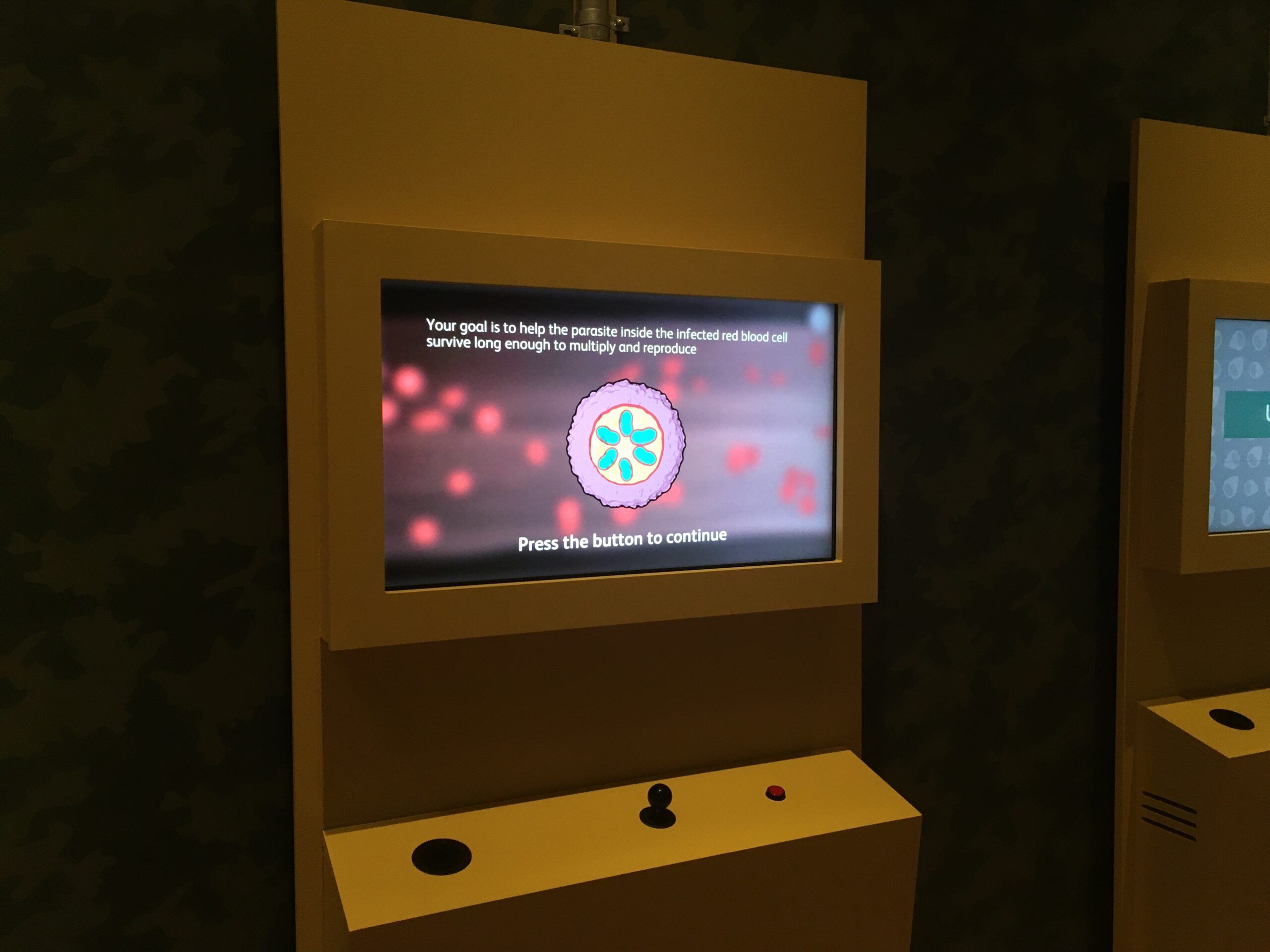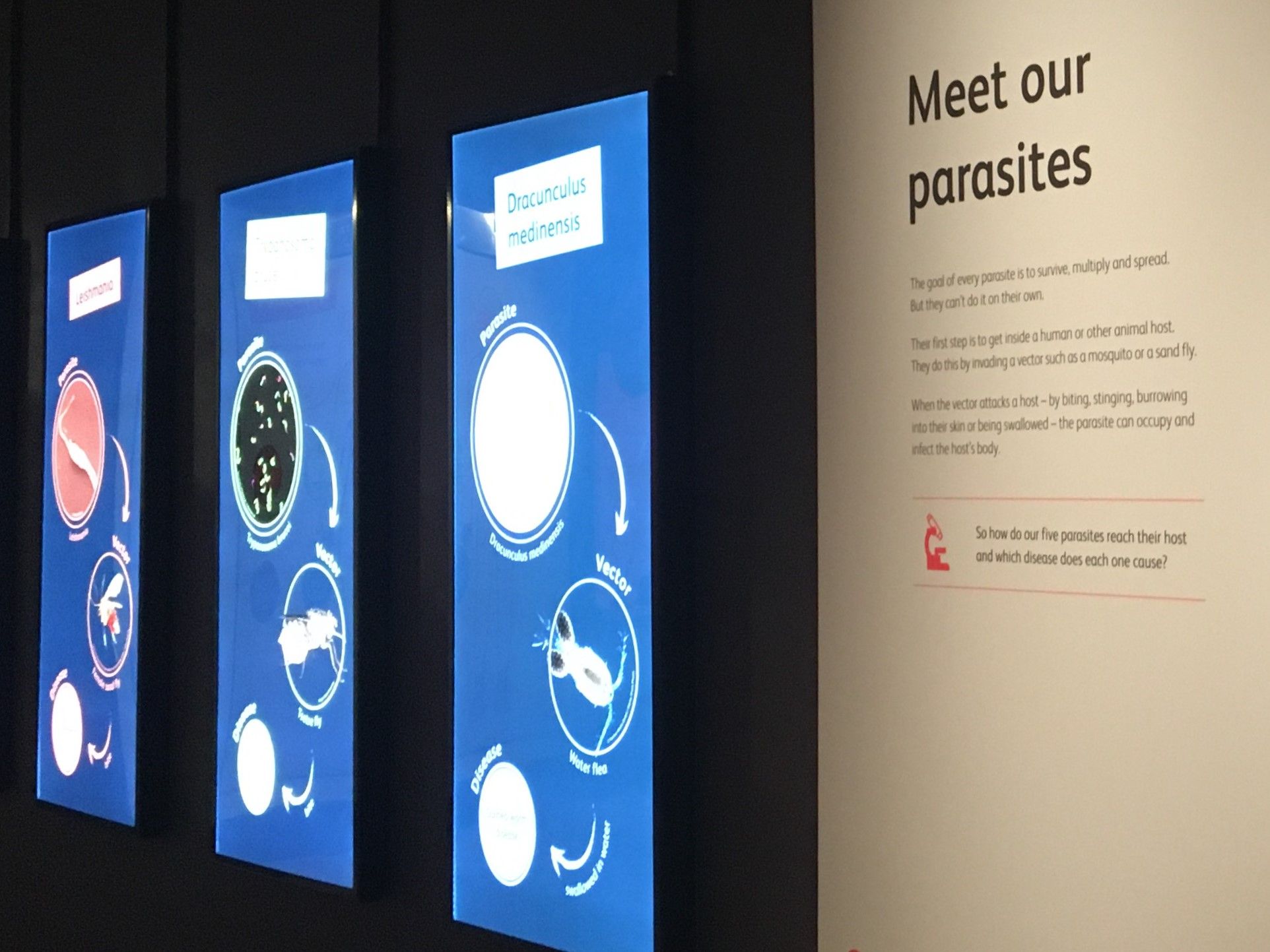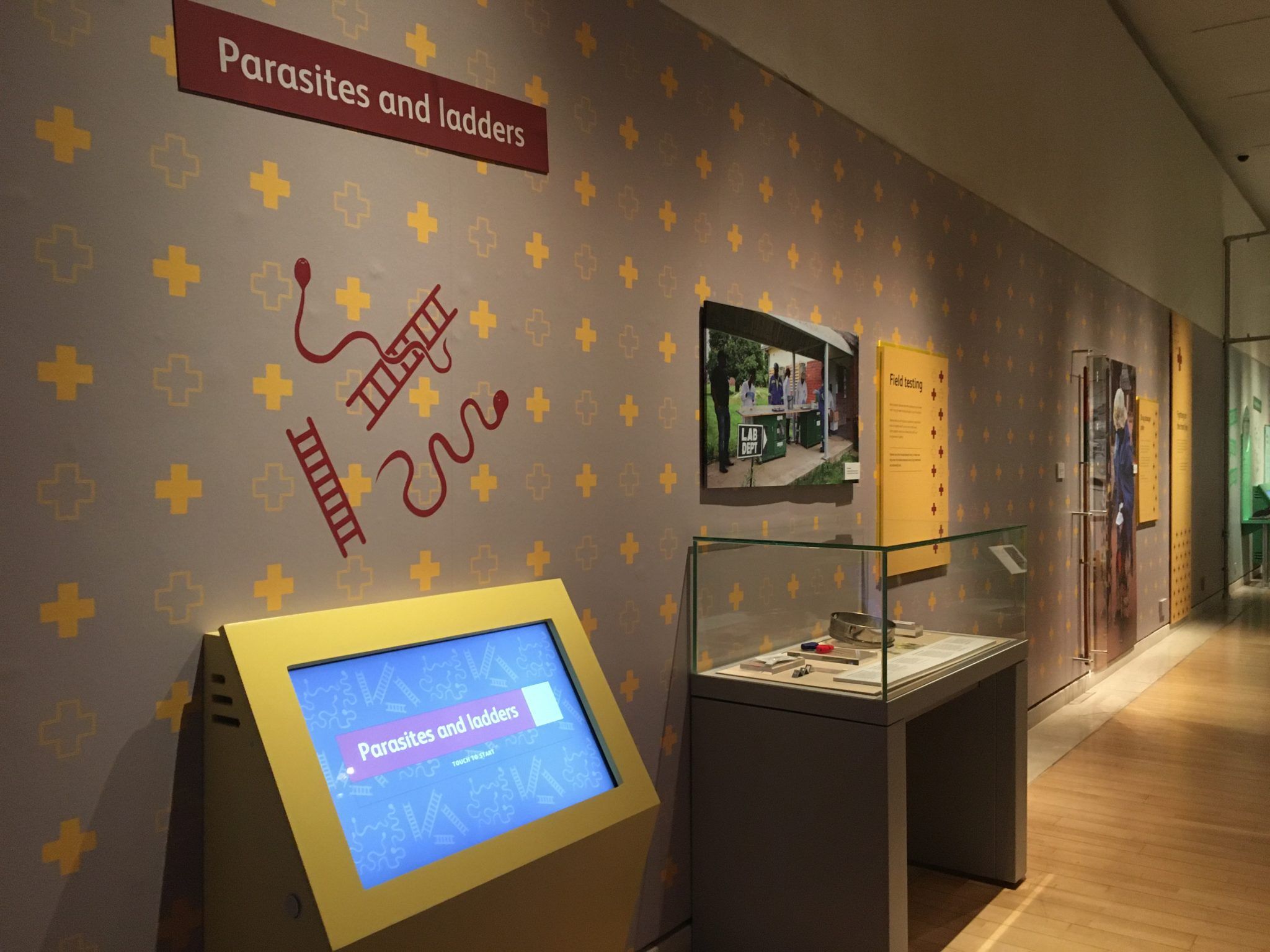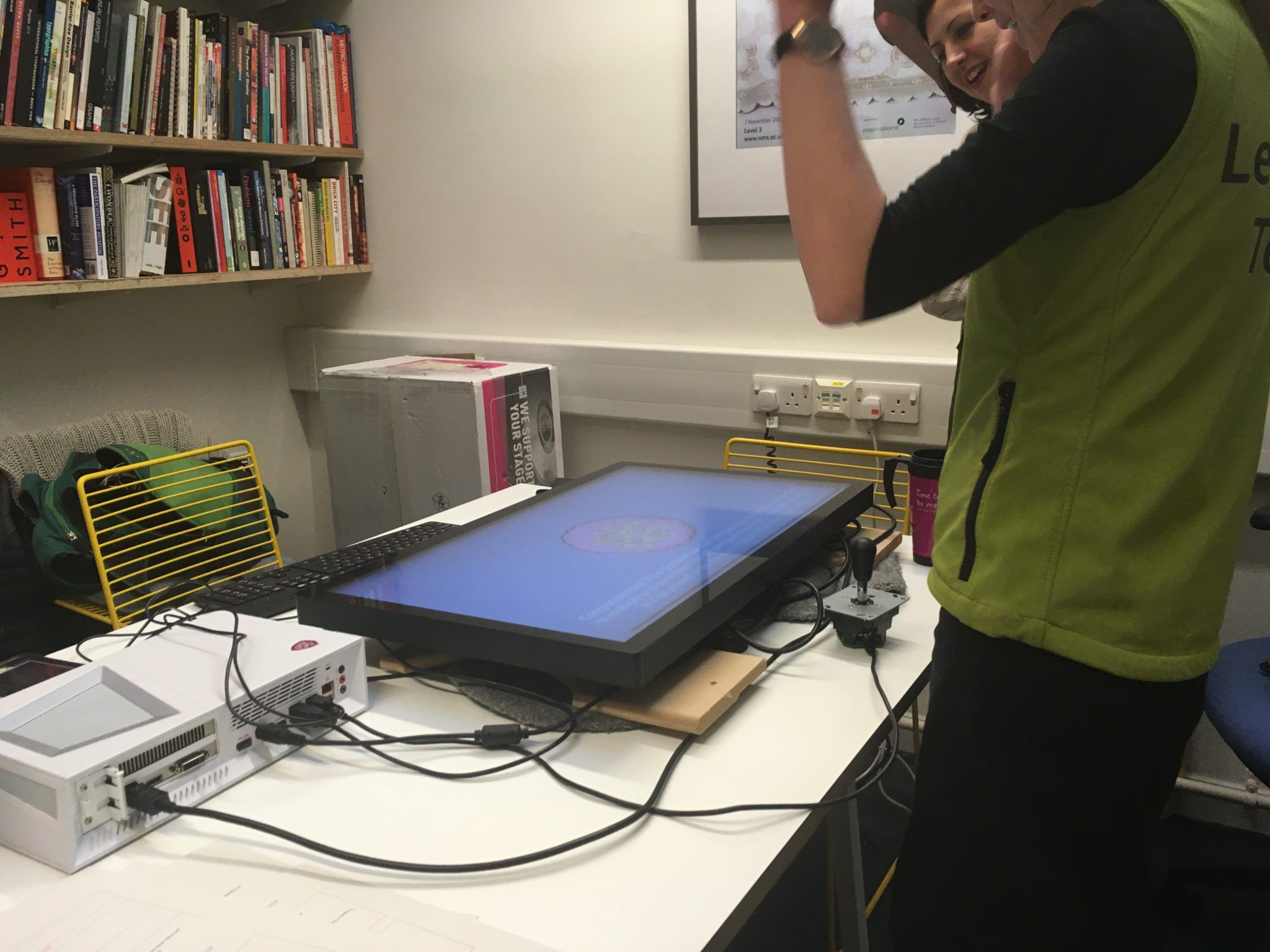Parasites: Battle for Survival
Developing digital exhibits to engage young people
How can museums use digital interactive exhibits to engage young people with cutting-edgescientific research? This was our challenge at National Museum of Scotland in the exhibition Parasites: Battle for Survival.
The other key partners involved in the development were the students and teachers of a local secondary school in Edinburgh. The exhibition curator and a museum learning officer visited the school multiple times with different exhibition ideas to consult the target audience. This gave us valuable input to develop the digital exhibits.
Reflecting on the whole process, I have drawn out these five top tips:

image caption here

Tip 1: Digital is not always the answer
My first task was to review the briefs. We had ideas for five digital interactive exhibits plus one large-scale AV. One of the most interesting things about this exhibition is that the topic is not simple. There are five parasites, each of which causes a disease, and each of which enters the human host via a different third animal. The most commonly known example is malaria. Malaria is caused by a microscopic parasite called Plasmodium, which gets into people via the bite of a female mosquito. The other four examples are even less familiar. It was tempting to use a digital exhibit to cover this information in an engaging way but our first step was actually to delete the proposed digital exhibit here in favour of back-lit graphic panels.
Tip 2: If the messages are complicated, make the game-play easy or familiar
Simplifying was a theme throughout, and I almost always find this on projects. When we wanted to show how public health workers often experience many set-backs during a campaign, we used the familiar format of snakes and ladders as an analogy for the experience.
In the ‘Under Attack’ game, we attempted to cover the very complicated way that the Malaria parasite attacks the human body in an arcade game. The key to making this game work was knowing where simplifying is OK and where to try to stick as true to the science as possible. We worked closely with our expert research scientists on this, sending them a series of sketches of the parasite at different life stages and explaining the reasons for simplifications we’d made.


Tip 3: Prototype
This one really is a non-negotiable. The digital exhibits were all developed by a small local company called Pixel Stag. They produced storyboards for us from our initial briefs, which we fed back on and they developed into prototypes. Time was extremely tight for testing these with museum visitors. So instead we invited museum staff with no connection to the exhibition or topic to try the prototypes. We are looking at three things during prototyping –motivation, usability and messages. This means is the game fun? can it be made more fun?, can people use it? is it clear what to do? and finally do people get the messages we intended them to?
Tip 4: Emotional engagement matters
Although it can be tempting to focus on content, the MOST important aspect of any exhibit is how it makes people feel. Our introductory AV shows some of the parasites under the microscope. We decided not to label any of these organisms. This AV is the entire ‘why’ for the exhibition: Why should I care about this ? So we focused on creating emotional engagement. We worked with Pixel Stag and animation studio Touzie Tyke on music, images and animation to create a spooky, threatening, ambience. Extremely brief headline text gives an instant and dramatic impression of the extent of the threat.